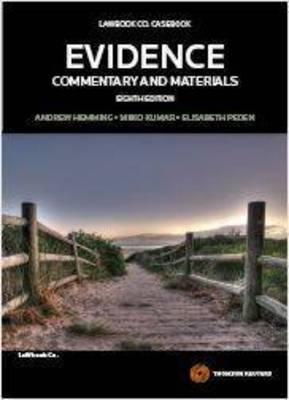| Sun | 10am – 5pm |
| Mon | 9am – 5:30pm |
| Tue | 9am – 5:30pm |
| Wed | 9am – 5:30pm |
| Thu | 9am – 5:30pm |
| Fri | 9am – 7pm |
| Sat | 9am – 5pm |
Ask our staff anything about our shop or products, or share your feedback.
Evidence: Commentary and Materials 8E introduces general principles and theoretical perspectives of the law of evidence, covering all Australian jurisdictions and explaining State by State variations. The most significant change since the previous edition is the expansion of the Uniform Evidence Acts (UEA) into Victoria, the Australian Capital Territory and the Northern Territory, leaving Queensland, Western Australia and South Australia as the remaining common law States.
As a result, legislative references have been updated throughout, replacing Victorian references with examples from Queensland and South Australia. Up until now, cases from New South Wales have dominated the UEAs but Victoria will provide a counterbalance in future, as evidenced by Dupas v The Queen, where the Victorian Court of Appeal declined to follow New South Wales authority. This inconsistency between Victoria and New South Wales has been brought into sharper focus following the decision in R v XY, where the New South Wales Court of Criminal Appeal preferred its own previous authority in R v Shamouil to that of Victoria's in Dupas v The Queen.
The disparity between New South Wales and Victoria will most likely have to be resolved by the High Court. Another important change is the amendment of the UEAs following a review by the ALRC, which has included amendments to allow second-hand or remote hearsay subject to the exceptions relating to admissions in criminal proceedings. Other developments include expansion of the freshness rule to cover other considerations apart from time; amendments to the UEA credibility provisions; and recent legislative reform to the right to silence in New South Wales.


